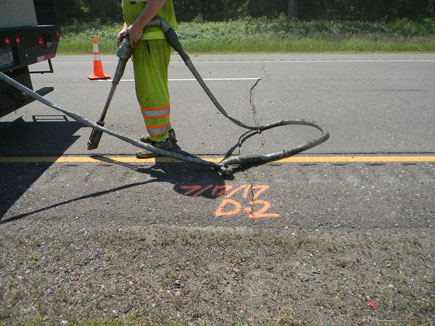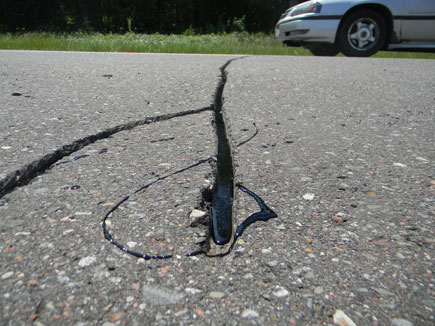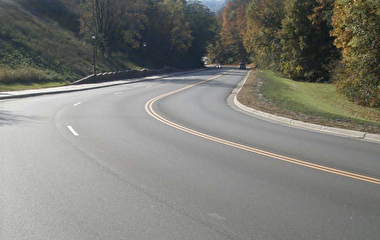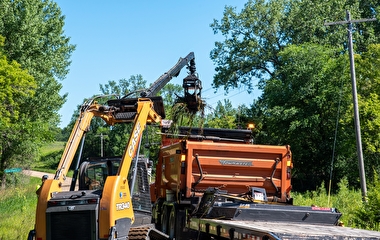clean the crack before sealing it. Photo: MnDOT
Repairing cracked asphalt is essential for maintaining performance—it keeps water from seeping into the pavement and creating bigger problems (like potholes) in the future. Road crews use two main methods for repairing asphalt cracks: clean-and-seal and rout-and-seal. In a new study, researchers compared these two methods to determine which had the cost-benefit advantage. Survey results, construction data, and field evaluations of repair performance over two years gave rout-and-seal a slight edge over clean-and-seal.
“There had never been any research done that compared the costs and benefits of these two methods,” says Manik Barman, an assistant professor in the University of Minnesota Duluth’s Department of Civil Engineering. “As a result, transportation agencies did not have guidelines or uniform procedures for selecting the most cost-effective crack-sealing method for a specific job. We aimed to provide a solution to this problem by determining which of the two repair methods offers the better value over time.”
For most crack repairs, road crews clean the crack and apply an asphalt filler or sealant. With clean-and-seal, workers use compressed air to remove debris from the crack before applying a sealant. With rout-and-seal, a saw or router is used to grind a shallow trench over the crack; the routed reservoir is then filled with sealant.
“Some agencies favor clean-and-seal because it is less expensive, reduces the time crews are on the road, and frees more time to maintain other cracks,” says Barman. “However, we knew if rout-and-seal delivered a longer-lasting repair, it might be more cost-effective than clean-and-seal in terms of life-cycle cost.”
fill the crack with asphaltic sealant. Photo: MnDOT
Researchers began by reviewing literature to see how agencies around the country approach asphalt crack repair. Next, they surveyed Minnesota road agencies to see which repair method they prefer and how long repairs typically last. To determine crack sealing performance, researchers evaluated Minnesota Department of Transportation (MnDOT) construction logs of old repair sites and visited 11 new repair sites. They then revisited the new repair sites 2, 6, 8, 12, and 18 months following the repair, calculated performance levels for each repair method at each site, and gathered cost data. Finally, the research team created decision trees to provide clear guidance for transportation planners and maintenance crews.
“To help select an appropriate crack repair method, we developed two decision trees,” Barman says. “The first is detailed, and the second is simple with only three variables—crack size, traffic level, and the number of times a crack has been sealed.”
Results of the study give rout-and-seal methods a slight advantage over clean-and-seal. Analysis of old and new projects showed that at an average performance index level, rout-and-seal repairs last about four years and clean-and-seal last about three. Because the difference is slight, factors such as treatment cost, life expectancy, ease of operation, traffic level, and crew manager opinion may guide selection of sealing strategies.
“This study provided very useful information,” says Dan Knapek, assistant county engineer with Sherburne County Public Works. “The rout-and-seal has a better cost-benefit over the life of the pavement than clean-and seal; however, they are relatively close. Agencies will need to decide if they have the manpower or resources to perform one over the other.”
The project was funded by the Minnesota Local Road Research Board.




